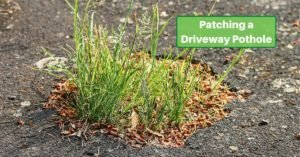Creating a great-looking garden means a lot of hard work on your part. You deserve to enjoy it! That means you shouldn’t just be able to gaze at it from the window or the porch. Ideally, you and others should be able to get up close to see the plants and smell their wonderful scent. And to do that, you need a fantastic path that matches the style and beauty of the garden itself.
Enjoying The Beauty Of Your Garden – To The Max
A stroll around or through your gardening at any time of day can be incredibly relaxing. It allows you to see up close the beauty that’s grown up as a result of all your efforts. You can take in the diversity of colors and textures that you’ve cultivated.
When you get up close to your garden, you realize even more what an amazing system it is. The diversity of leaf types, heights, textures, and more all are part of what makes the area great. Whether you have vegetables or flowers, you can enjoy watching them as they develop and reach full growth.
Of course, there’s a practical side to this, as well. Seeing the garden up close – without having to wade into it – allows you to look for any problem areas without getting dirty. From the path, you can see if any plants are suffering and in need of some TLC. Or you’ll be able to tell if there are any troublesome insects around. You’ll still need to spend some time each week getting your hands dirty in garden care, but a nice path to observe from can give you a daily view of how things are going. And that’s without needing to change out of your work shoes!
Your garden path is functional, but it should be beautiful as well. It can match the tone and style of your garden and the yard as a whole. Let’s look at some possibilities that may match the “feel” you’re going for.
Some Ideas For Your Garden Path
There are many materials and styles you can choose for a garden path. Your choice will depend on personal taste, the type of garden you have, and even your budget. From simple to elegant, there are dozens of possibilities. We’ll mention a few materials you could choose and some basic ideas.
Dirt Path With Log Steps
Do you live in a rural area, surrounded by forest? Does your garden incorporate that theme, with small conifers, wild flowers, and the like? Or maybe you have a pond and a waterfall with pond planets and maybe some animal visitors?
A great idea for a path in this environment is to keep things as natural and simple as possible. A dirt path may not be the cleanest, but it definitely reflects the look of your garden area. If you’re on an incline, add small log steps along the way. You could even have a rustic railing made of sections of thin logs, as well
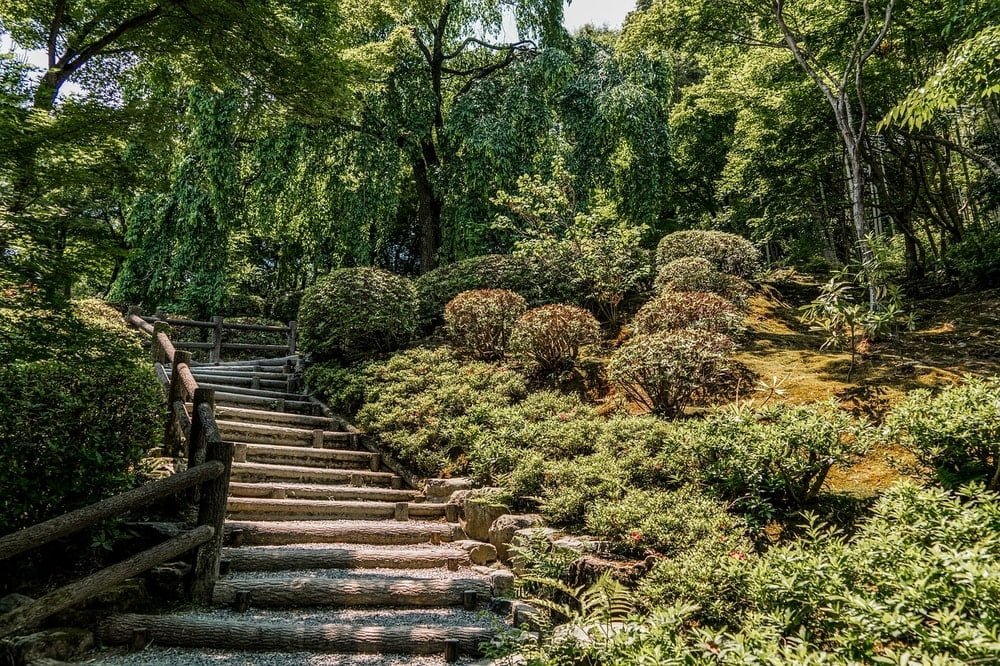
If you have a rock garden or other area that’s hillier, you might want to consider landscaping ties. While these might be too big if your lawn has only a slight pitch, they’re great when you need a firmer step.
Tree Section “Pavers”
Another rustic idea is to use slices of tree trunks to serve as pavers. Real logs cut into sections about two inches thick can be laid as a path. With a large tree, there could be enough wood to make a relatively long path. And the pavers will have different sizes as the tree tapers.
Of course you’ll need to treat the wood first so that it won’t rot.
If you don’t want to use real wood but still like the appearance, you can look for concrete pavers designed to look like tree sections, right down to the rings!
Gravel Or Crushed Stone
A gravel or crushed stone path is a simple alternative that can serve you well and feel great as it crunches under your feet. It’s easy to maintain and has a natural feel while also being cleaner than dirt or grass.
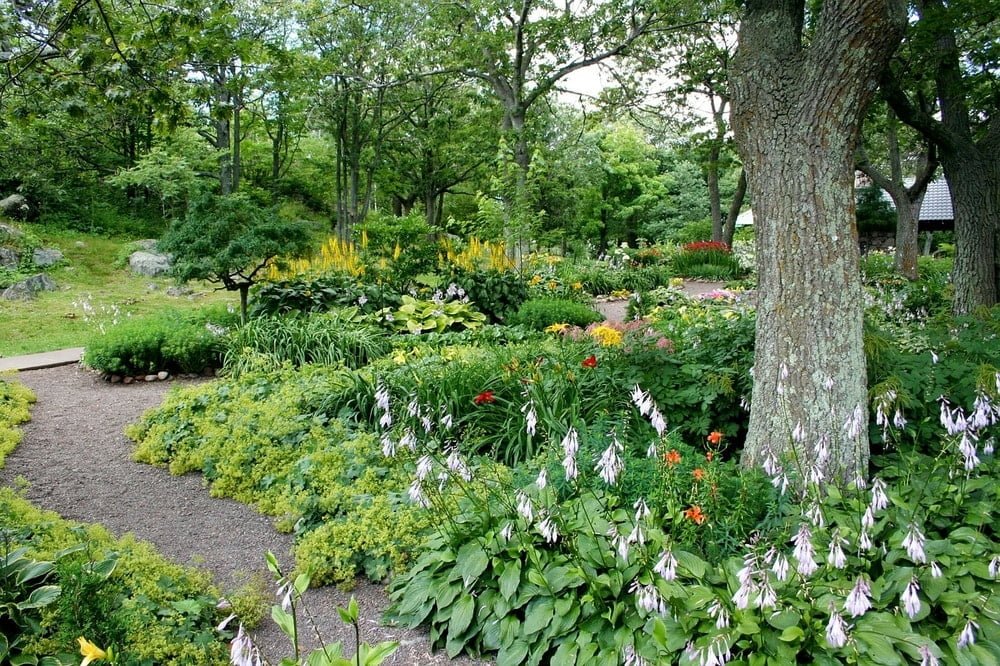
It’s best to install it with a weed-resistant liner underneath so you don’t have to worry about weeds growing up constantly. It also helps to have a border on either side of the path so that the gravel stays in place. Otherwise it could easily slide or wash into the lawn and the garden.
Quarry Stone
When you want something a bit more formal yet still relaxed, quarry stone has a fantastic appearance. This look recalls a country cottage or a simple winding path.
The random shapes of each piece are great reminders that these pieces are hand-carved. There’s true artistry in fitting them together to create a smooth, even path.
Quarry stone, with its hewn look, can work in a straight path or a wavy one that winds along the garden rather than create a hard, straight edge. It all depends on the feel you want to create!
Concrete Or Brick Pavers
Another great look that works well for a garden path is using pavers. Whether they’re made of concrete, brick,or another material, they are fantastic for their durability. While you may be able to lay them on sand, they’re more stable if you add grout to keep them from shifting.
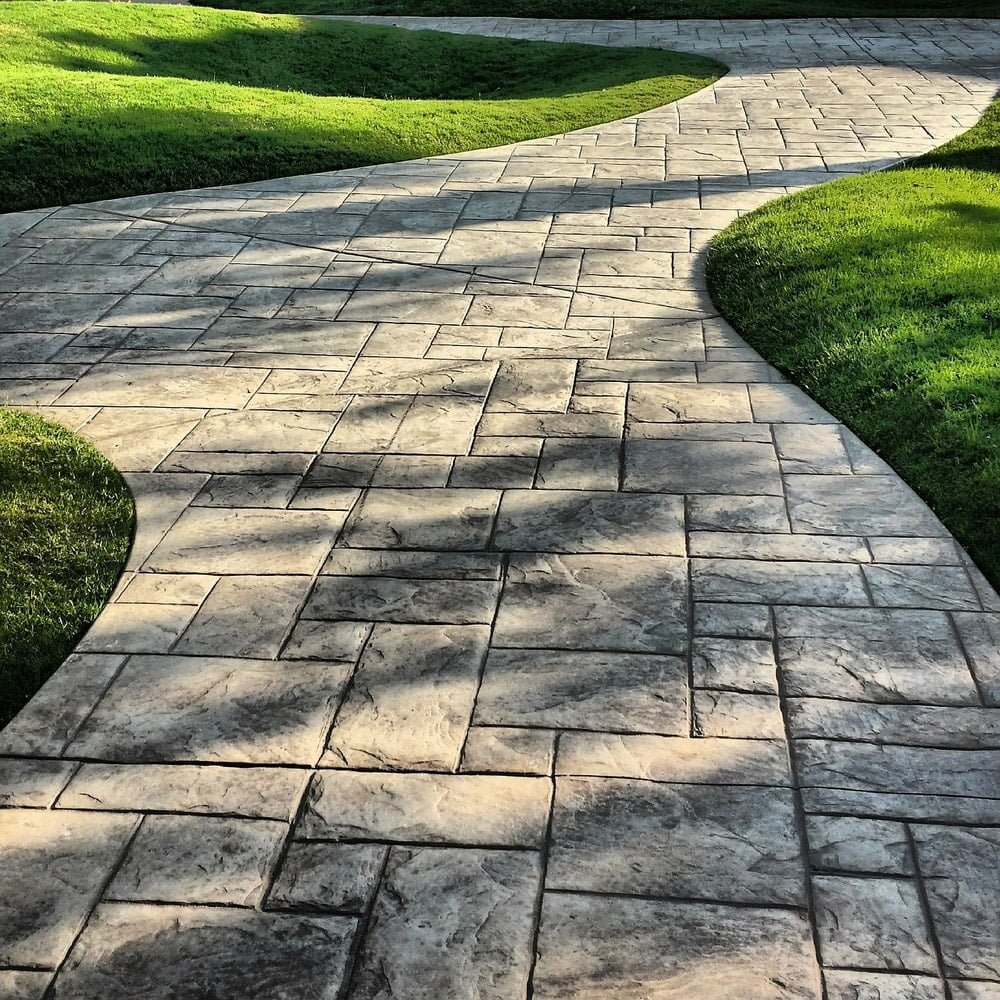
Pavers are most often cut in squares or circles, which makes them convenient to lay in straight lines. You may have to cut the edges with a masonry saw to get a curved effect.
Most often, concrete pavers look like some other material such as brick, wood, or exposed aggregate. That and their reasonable price makes them a good choice for a variety of styles.
Mulch
A simple look, mulch makes for another outdoorsy style for a pathway. Like gravel, it benefits if material is laid to help keep the weeds out and if it has a border along the sides to keep it from spreading.
Mulch is affordable and environmentally responsible since it comes from tree matter that would otherwise be disposed of. You may have to replace it occasionally but it’s not pricey. Nothing fancy here, but it keeps the path well-defined and will keep your feet out of the mud.
Since it’s available in a wide range of colors, it can work well with your architecture and the colors in your garden.
Flagstone
Another natural stone that goes well alongside a garden is flagstone. Flagstone may be slate or another type of stone. Basically, they are natural pavers.
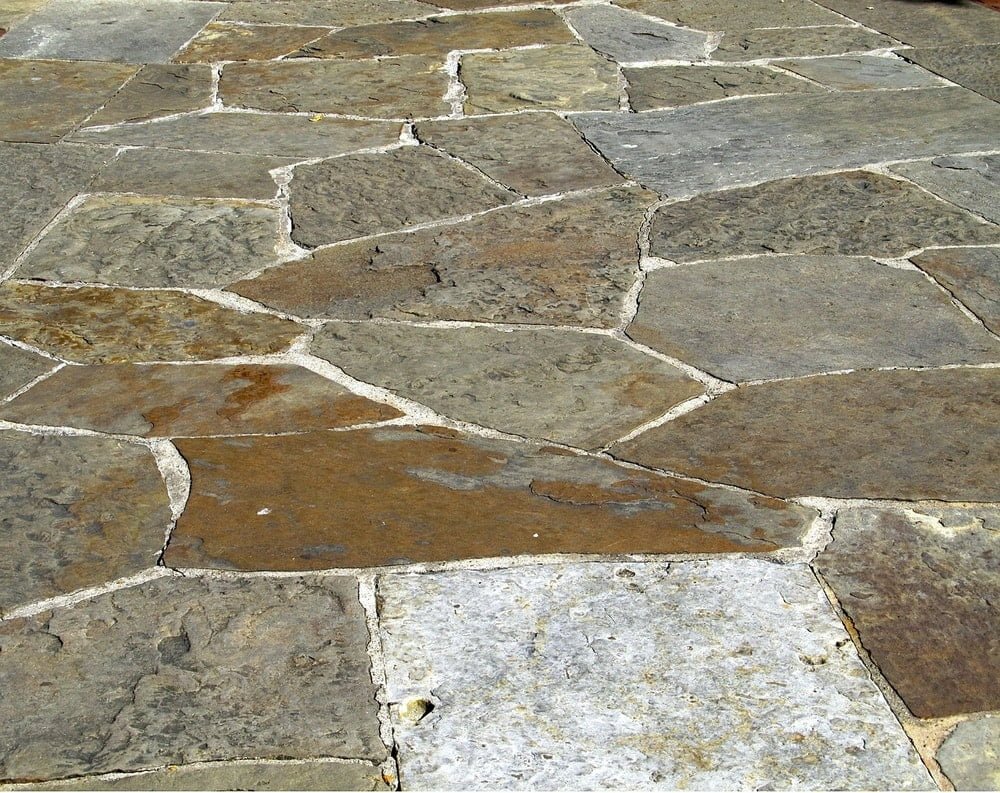
Like other pavers, flagstone can be laid loose or grouted. They are heavy and are unlikely to move much. Flagstone offers a great, traditional appearance that allows you to be creative with the layout of your path.
Concrete
If you want a continuous path that’s also durable, concrete can be a great choice. While it can be rather “boring”, there are a few options to bolster its appearance.
You could choose stamped concrete, which has color added and a pattern stamped into it. Or you could opt for exposed aggregate, which has tiny stones or other materials that are partially exposed on the surface.
Concrete can be poured in nearly any configuration you can imagine, following the natural curves and hills of your yard.
Conclusion
These are just a few great ideas for what to use to construct your garden pathway. There are too many great ideas to include them all here! Look at your yard and consider how a path should move through it and around your garden and make a decision about what will work best for you!








